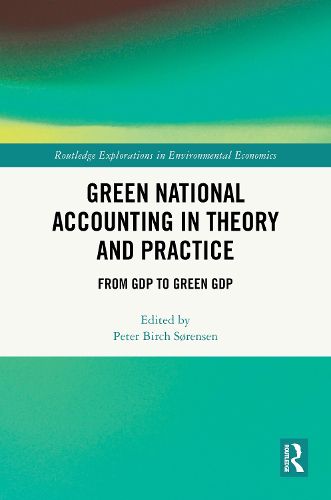Readings Newsletter
Become a Readings Member to make your shopping experience even easier.
Sign in or sign up for free!
You’re not far away from qualifying for FREE standard shipping within Australia
You’ve qualified for FREE standard shipping within Australia
The cart is loading…






This book explains the theoretical and empirical foundations for constructing a measure of a country's Green GDP and how this measure relates to the conventional GDP.
Opening with an overview of the academic literature on green national accounting, the first chapter sets up an analytical model of the interaction between a small open economy and the environment to derive a theoretically founded measure of the economy's Green Net National Income ("Green GDP"). The book then illustrates how the theory can be applied in practice to produce a time series for the evolution of Denmark's Green GDP and its various components (with an emphasis on the environment) over the last thirty years. As far as possible, the data used in the calculations were constructed in accordance with international statistical guidelines. Therefore, the careful explanation of the methodology which is outlined in the book can be applied to other countries using comparable data.
This book will be of significant interest to scholars in the field of environmental economics and statisticians and practitioners working on green national accounting.
$9.00 standard shipping within Australia
FREE standard shipping within Australia for orders over $100.00
Express & International shipping calculated at checkout
This book explains the theoretical and empirical foundations for constructing a measure of a country's Green GDP and how this measure relates to the conventional GDP.
Opening with an overview of the academic literature on green national accounting, the first chapter sets up an analytical model of the interaction between a small open economy and the environment to derive a theoretically founded measure of the economy's Green Net National Income ("Green GDP"). The book then illustrates how the theory can be applied in practice to produce a time series for the evolution of Denmark's Green GDP and its various components (with an emphasis on the environment) over the last thirty years. As far as possible, the data used in the calculations were constructed in accordance with international statistical guidelines. Therefore, the careful explanation of the methodology which is outlined in the book can be applied to other countries using comparable data.
This book will be of significant interest to scholars in the field of environmental economics and statisticians and practitioners working on green national accounting.